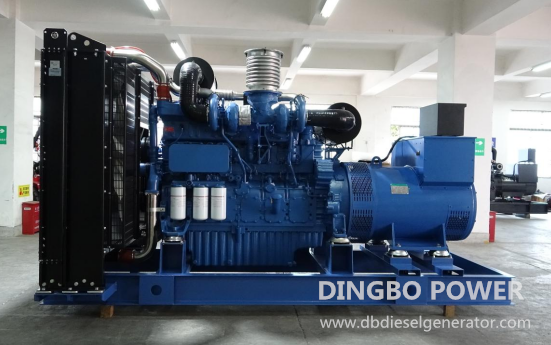Engine oil is an essential part of the diesel generator engine. It can lubricate moving parts, reduce friction, and help in heat dissipation, ensuring the smooth operation and longevity of the generator. The oil needs regular changing to keep proper lubrication and ensure the internal parts function properly. In this article, we’ll show how to change engine oil in your diesel generator step by step.
How often should I change the oil in my diesel generator?
Typically, engine oil of a diesel generator should be replaced after the first 50 hours of usage and then every 250 hours thereafter. Once a year is considered the longest time to keep oil in a engine. Primarily, the frequency of oil changes for your diesel generator depends on several factors, such as its make and model, its age, usage and where it’s used. We recommend that you change the oil in accordance with the manufacturer's recommendation. If you don't have the owner's manual, you can go to the website of the brand, download the user's manual and find the information. If you operate in dusty conditions, it is advised that you perform the oil change more often.

Generally, for diesel generators with capacity up to 200 KVA, oil change frequency is 200 hours or 6 months whichever comes first in ideal condition. For those above 200 KVA capacity, oil change frequency is 250 hours or 6 months whichever comes first in ideal condition. For new diesel generators, oil change frequency is 50 hours or 6 months whichever come first in ideal condition.
How to change engine oil in a diesel generator?
Step1: Prepare the essential tools
To change the oil, you need to have essential tools prepared, such as the replacement oil, clean rag, paint tray or oil pan, new oil filter, oil funnel, wrench, Philips screwdriver, protective gloves and goggles, etc.
Step2: Warm up your generator
Cold and old engine oils tend to be sticky, which is not easy to be drained. So you need to warm up your generator for 5~10 minutes at about 50% load then turn it off before changing your oil. This can warm up the old oil inside and make it easier to drain.
Step3: Unscrew the oil drain plug
Prepare a container such as an oil pan for the old oil, and put it under the drain plug that you can find below of your diesel generator. Remove the front access door (for silent type diesel generator), use a wrench to unscrew the oil drain plug. Be careful and avoid letting the plug fall into the hole. Torque values vary from manufacturer to manufacturer and depend on the generator size. Please consult your user manual.
Step4: Drain the oil
After taking the lid of the drain plug off of the engine, drain the old oil completely while the engine is still warm. Use diesel or a rag to clean the residue or carbon on the lube oil coarse filter. When done, put the drain plug back and close it tightly. Use a threaded barbed fitting along with a rubber hose to assist in the draining of the unit if necessary. Please note that clean the oil plug and washer before sealing the oil drain. Remember to clean the area round the drain plug and make sure there is no oil on this surface.
Step5: Add the new oil
Take the lid off the engine oil, fill up your diesel generator with new oil only until on the upper limit of the oil gauge. Take a measurement to confirm that the oil level is full but must be below the H Mark. If you've overfilled the oil sump, just tip the unit slightly and let the excess oil drop out. Take another measurement and wipe away any excess oil, reinsert the dipstick in a clockwise rotation. Then tighten the oil filler cap securely and wipe down any oil spills on your generator with a clean rag.
Friendly reminder: Oil viscosity and type is dependent on the climatic conditions. Please consult your user manual for recommended oil viscosity. Read more about how to choose the right type oil for your diesel generator.
Contact Dingbo Power to get the right advice
Hope the information above is helpful to you. If you’re still unsure how to change the engine oil in the diesel generator or looking for a new diesel genset, feel free to contact Dingbo Power. We are a professional generator manufacturer with more than 17 years’ production experience. You can rely on our experienced and knowledgeable experts to provide the right advice and a generator to meet your unique requirements.
Comments
Post a Comment